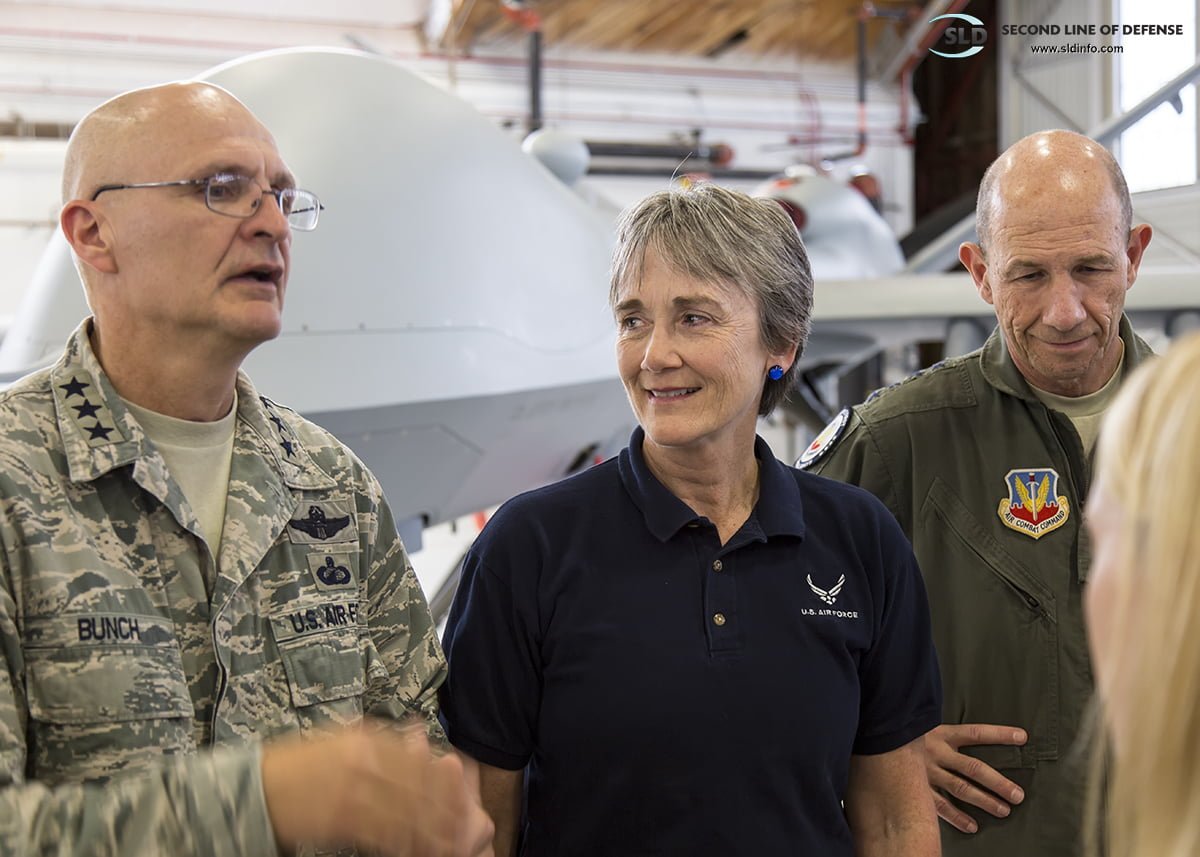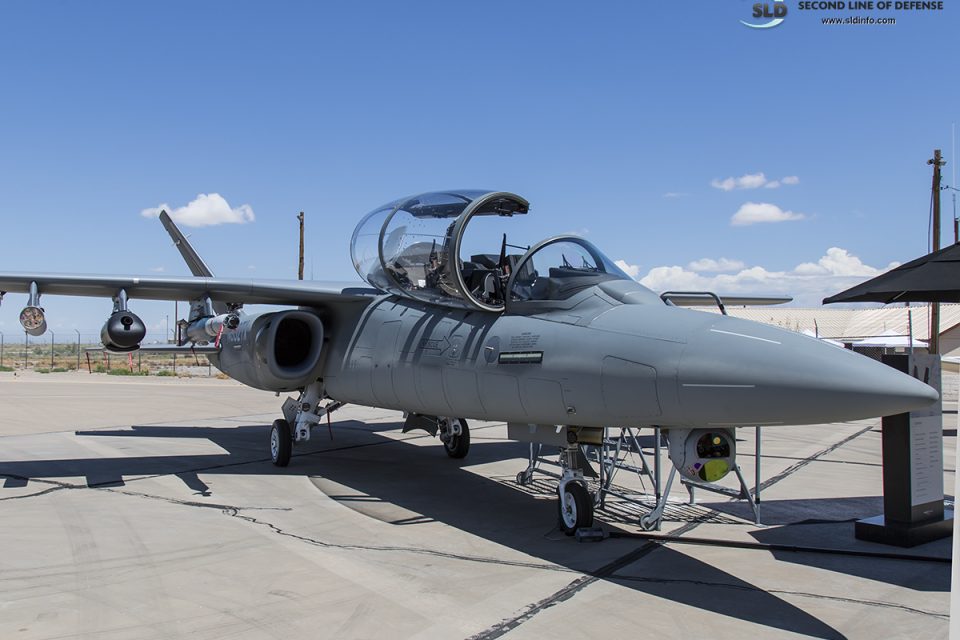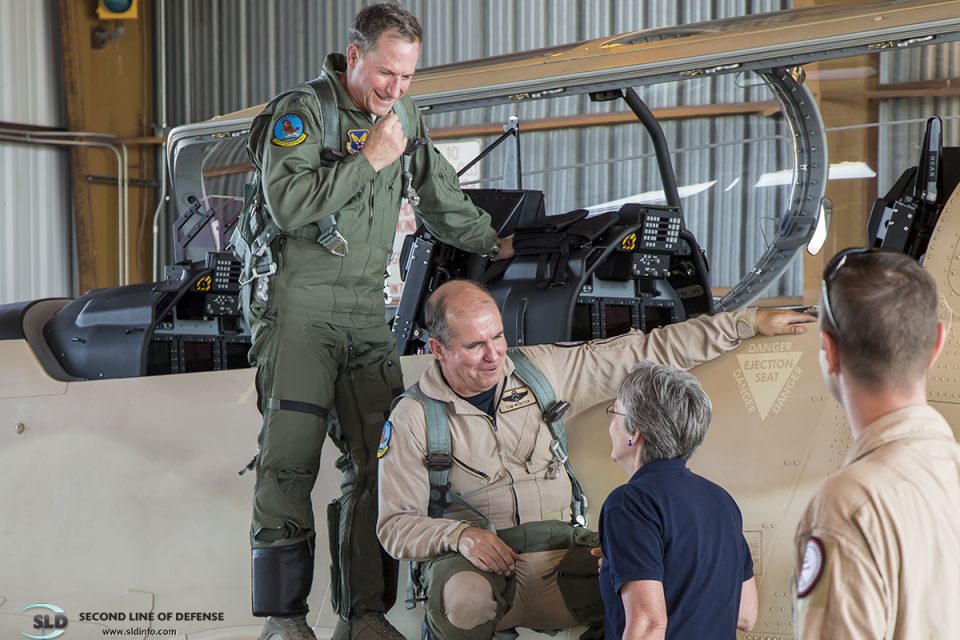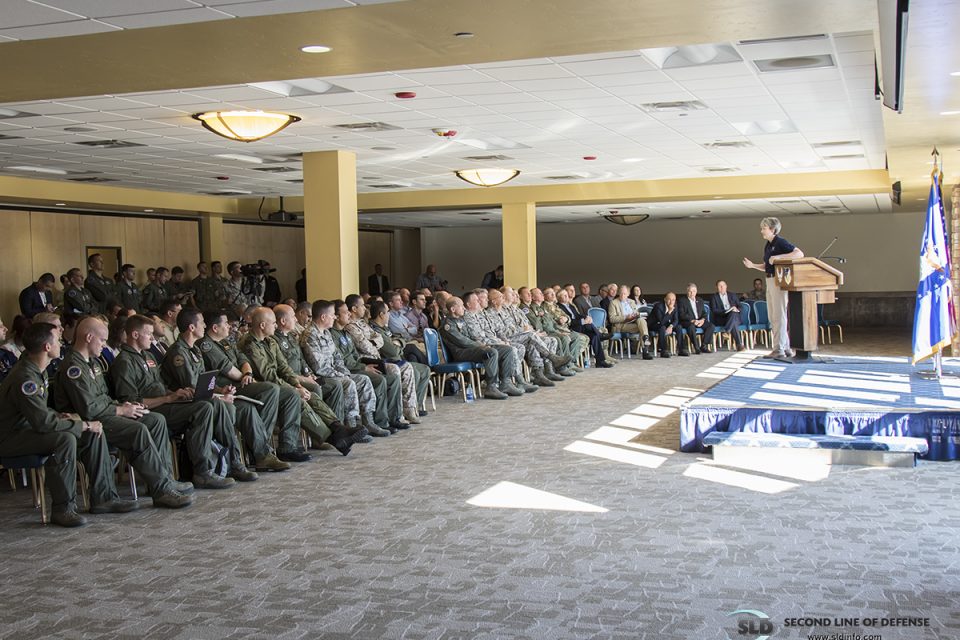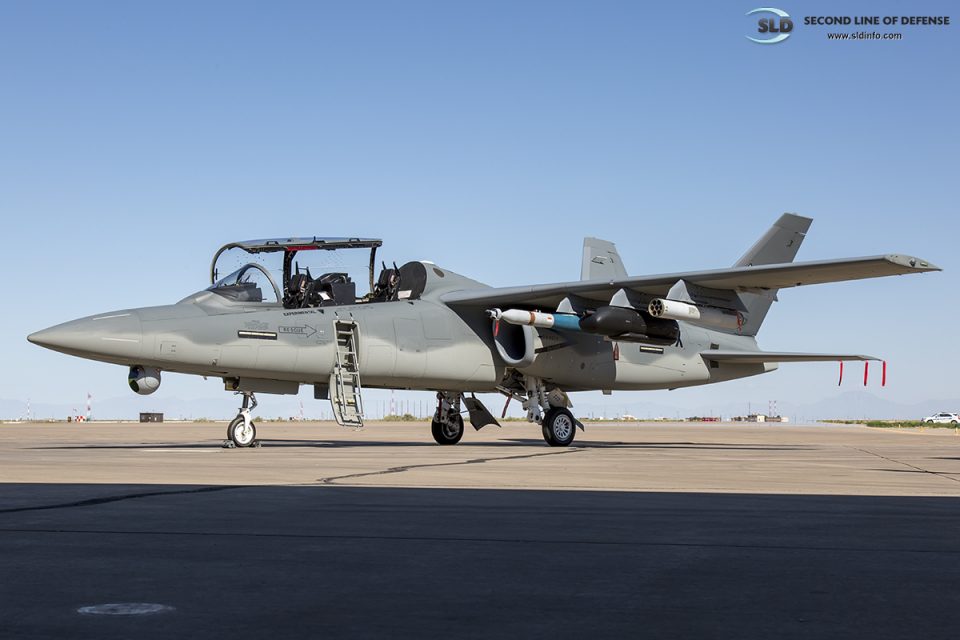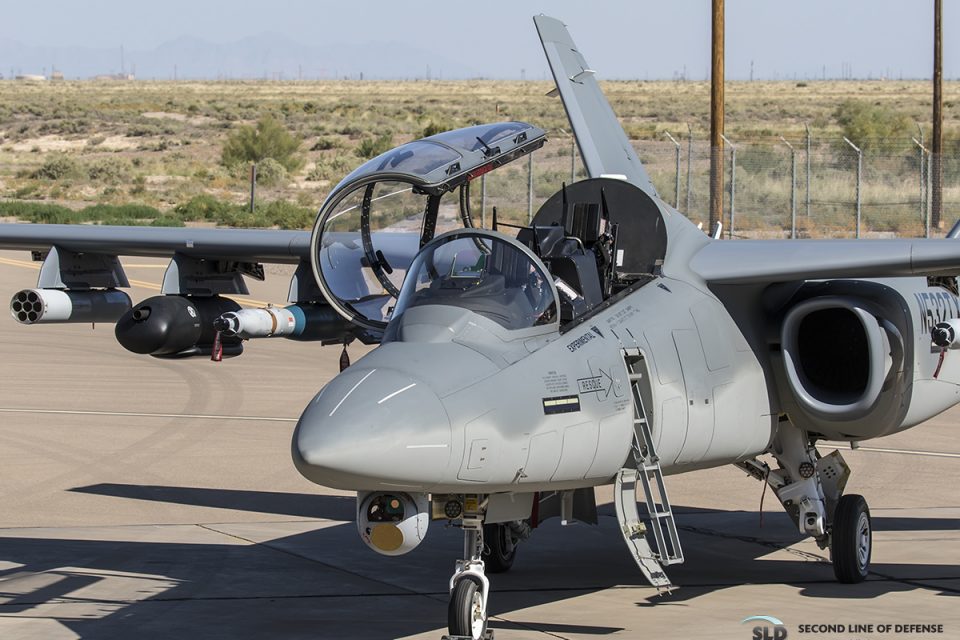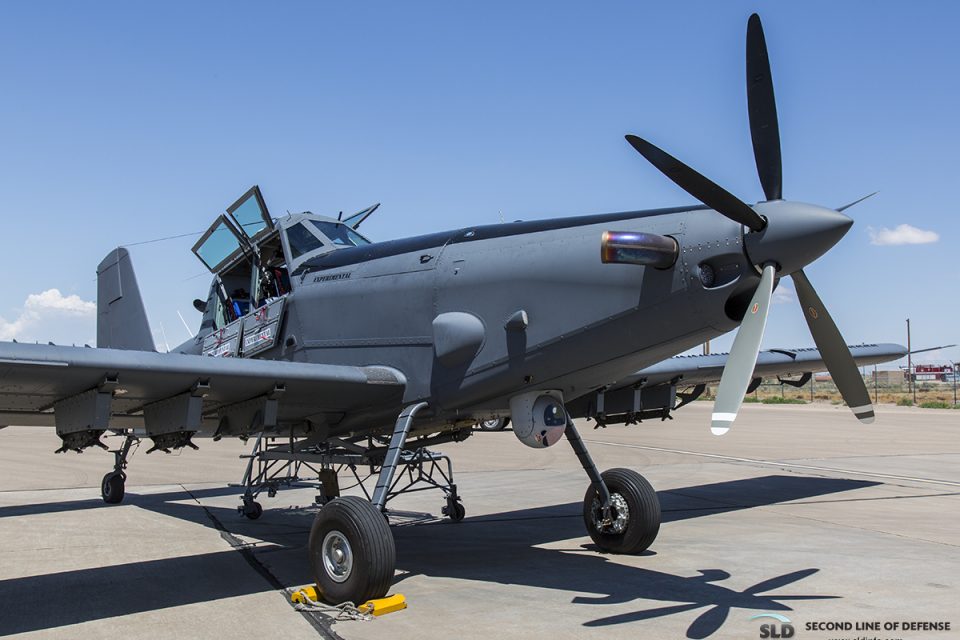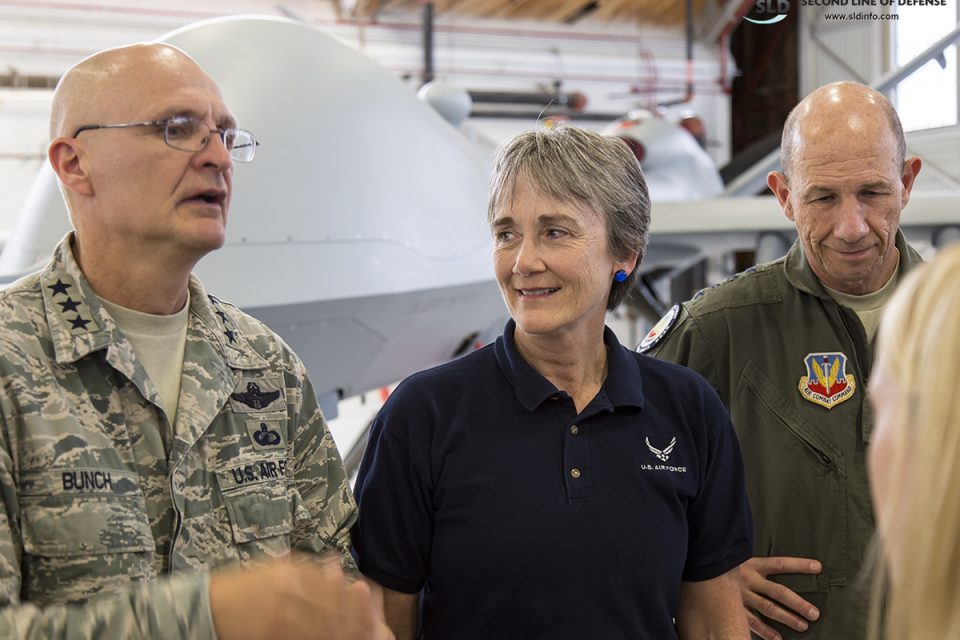2017-08-14 By Todd Miller
USAF leadership, international representatives and media gathered at Holloman AFB August 9, 2017 to focus on the USAF’s OA-X Experiment.
The event was organized under the auspices of the USAF Light Attack Experiment (OA-X) featuring the Sierra Nevada Corp./Embraer A-29 Super Tucano, Air Tractor Inc./L3 Platform Integration AT-802L Longsword, Textron Aviation’s AT-6 Wolverine and Scorpion Jet.
The composition of the group including U.S. Air Force Secretary Heather Wilson, U.S. Air Force Chief of Staff General David Goldfein, Air Combat Command Commander General Mike Holmes, Lt. General Arnold Bunch Asst. Secretary of the Air Force – Acquisition and many more.
Obviously, the USAF was underscoring the importance of this effort.
The message from Air Force Secretary Heather Wilson and Air Force Leaders who spoke was clear – the OA-X experiment is part of what the USAF hopes is a shift in USAF platform procurement and capability development philosophies.
In many respects, this message of change was the event.
As SecAF Wilson noted:
“Our adversaries are modernizing faster than we are and it is up to the USAF to drive innovation so that our adversaries are surprised by just how powerful we are and how ready we are for any fight, anytime, anywhere.
That means we have to think about things in new ways and identify new capabilities faster than we have done in the past.”
“This drive to innovation to find rapid and affordable solutions to the challenges that we face on the battlefield is really about two things; It’s about what we are looking at, and it’s about how we are developing those capabilities.
Innovation is in the DNA of the USAF, and sometimes and perhaps at some points in our history we have lost that, that DNA of being the ‘bicycle mechanics’ who are constantly tinkering and finding new things and getting after it in new ways.
We are trying to reinvigorate that in the Air Force in both what we are researching and how we are pursuing innovation.”
“With respect to the What, I expect over the next couple months we will begin a wide ranging review of USAF research priorities in basic and applied research [to identify] the big things we have to drive forward to create the Air Force of 2030.”
“It is also about How we are pursuing [innovation].
We are looking for new ways to do business.
New ways to get ideas from our lab bench to our flightline faster.
New ways to get capabilities that our Airman need today and can’t wait the 2-3 years for the normal acquisition process.
We’re breaking barriers, going outside the box.
We’re willing to try new things in new ways.”
Wilson provided the following examples, “We are moving forward with a National Space Defense Center so we can have real time situational awareness of the space battlefield. That system, like all Air Force systems going forward will be open architecture.”
To be unmistakably clear Wilson stated that [exquisite (exclusive) or stand alone systems] “…will not win a contract with the USAF. If it doesn’t integrate with the open architecture you might as well not bid. That is going to be the way we will do business.
We won’t have exquisite and exclusive systems.
We want to have plug and play systems so we can rapidly change out technologies to stay ahead of the adversary.”
SecAF Wilson noted a recent example of the Special Operations Command (SOC) doing things “outside the box” that yielded the desired results; “Our special operators often go into very difficult situations with dogs.
You can’t jump out of an airplane with a dog above 18,000 ft. because they don’t make oxygen masks for dogs.
So rather than go out with exact specifications and an RPA for an oxygen mask SOFWERX and SOC decided to hold a competition.
For a prize of $6,000 they got an oxygen mask for dogs!
And under the [relevant] Federal Act that qualifies as a competitive procurement.”
“We need to get after it in different ways.
The Light Attack Experiment that you will see today is one of those ‘outside the box’ ways of looking at things.
The $6,000,000 experiment was enabled by the US Congress in the 2016/2017 National Defense Authorization Acts and it gave rapid acquisition authority to the military to do things differently.
To his credit, Chief of Staff General Dave Goldfein decided to take advantage of this authority as it related to concepts for light attack.”
“In less than 5 months we have 4 aircraft on the ground for testing.
That is the kind of rapid evaluation that those provisions were intended to allow.
It is an experiment.
We are learning things.
We want to meet the demands of the permissive environments at lower costs.
We want to develop capabilities for contested environments and use this experiment to evaluate the military utility of these kinds of aircraft and the manufacturing feasibility of these aircraft.”
“The empirical data that we gather from this experiment will inform strategic decisions about where we need to go from here.
But I hope the broader message is clear to all.
It’s ok to experiment.
It’s okay to do things fast.
It’s okay to try stuff.
It’s okay to productively fail.
Because we learn things and then we move on very quickly to develop capabilities to defeat the enemy.”
Later in a follow-up interview SecAF Wilson unpacked the statement ‘productive failure;’ “One of the things we need to get back to as a service is “productive failure;” where we try something, learn from it, and it really was an experiment.
When we have the first experiment fail and learn from it – I am buying the cake.”
“We can’t just stand back, set out requirements do analyses of alternatives, spend five years figuring out exactly what we want, put out an RFP, throw it over the fence and take 10 years to develop the technology.
The adversary is innovating faster.
To prevail in 2020 and beyond we have to innovate, we have to engage industry and the private sector in helping us to maintain the edge.
It will be faster, it will be more dynamic.
We have some wonderful innovators in the USAF, we just need to liberate them.”
Quoting Lt. Gen Harris SecAF Wilson noted, ‘We are using the experiment to team with our industry partners with what is currently available to study the benefits to see if we can proceed to a combat demonstration.”
Wilson continued, “I hope this starts to change the way we do acquisition on projects and change the way in which we can understand capabilities and even think of new concepts and ways of bringing the fight to the enemy.”
As an future example of innovation and experimentation AFSec Wilson referenced Thunderdrone an upcoming competition involving “drone swarms” in conjunction with SOFWERX.
Later in the day, General Holmes noted the USAF sponsorship of the Drone Racing League as a related example of the Air Force commitment to embrace incoming technologies, people and capabilities.
Secretary Wilson concluded, “Let’s see what innovations Americans have and let’s start to adapt and bring them into the USAF to support our Airman.”
But to put this in perspective. I reflect on the early years of jet flight and the incredible activity that took place at Edwards AFB following WWII right through to the 1970s.
Granted the complexity of today’s weapons systems temper expectations that we will see anything like those decades again.
However, the leadership is clearly moving to renew and apply that spirit to the technology and capability opportunities available today.
Given success the US Air Force will remain the dynamic, powerful protectorate of the US and its global interests for the foreseen future.
Quotes have been edited for readability while maintaining integrity of meaning and intent.
The Second Line of Defense extends thanks and appreciation to Arlan Ponder and the entire Public Affairs team and personnel of 49th Wing Holloman AFB, as well as all the leaders of the USAF that granted time, availability and expertise to our group. You were all gracious and professional hosts.


